-
 Bitcoin
Bitcoin $83,291.0340
-0.96% -
 Ethereum
Ethereum $1,826.6379
-1.54% -
 Tether USDt
Tether USDt $0.9998
0.00% -
 XRP
XRP $2.0549
-1.26% -
 BNB
BNB $606.8753
1.28% -
 Solana
Solana $119.1310
-4.05% -
 USDC
USDC $1.0000
0.00% -
 Dogecoin
Dogecoin $0.1659
-1.56% -
 Cardano
Cardano $0.6500
-2.57% -
 TRON
TRON $0.2364
-0.34% -
 Toncoin
Toncoin $3.7730
-5.06% -
 UNUS SED LEO
UNUS SED LEO $9.4476
0.65% -
 Chainlink
Chainlink $13.0772
-2.81% -
 Stellar
Stellar $0.2627
-1.16% -
 Avalanche
Avalanche $18.6021
-1.63% -
 Sui
Sui $2.3506
0.90% -
 Shiba Inu
Shiba Inu $0.0...01230
1.04% -
 Hedera
Hedera $0.1637
0.05% -
 Litecoin
Litecoin $83.5759
2.10% -
 Polkadot
Polkadot $4.0229
-0.74% -
 MANTRA
MANTRA $6.3749
2.08% -
 Bitcoin Cash
Bitcoin Cash $303.6743
-0.24% -
 Bitget Token
Bitget Token $4.5449
-0.46% -
 Dai
Dai $1.0000
-0.01% -
 Ethena USDe
Ethena USDe $0.9997
-0.01% -
 Pi
Pi $0.6435
-7.05% -
 Hyperliquid
Hyperliquid $12.2904
-5.52% -
 Monero
Monero $214.8078
-0.76% -
 Uniswap
Uniswap $6.0066
-0.82% -
 Aptos
Aptos $5.2560
0.22%
What is an "algorithmic stablecoin"? How does it maintain price stability?
Algorithmic stablecoins use complex algorithms and economic incentives to maintain a stable price, but they are inherently risky and require thorough understanding before investment.
Mar 29, 2025 at 09:57 pm
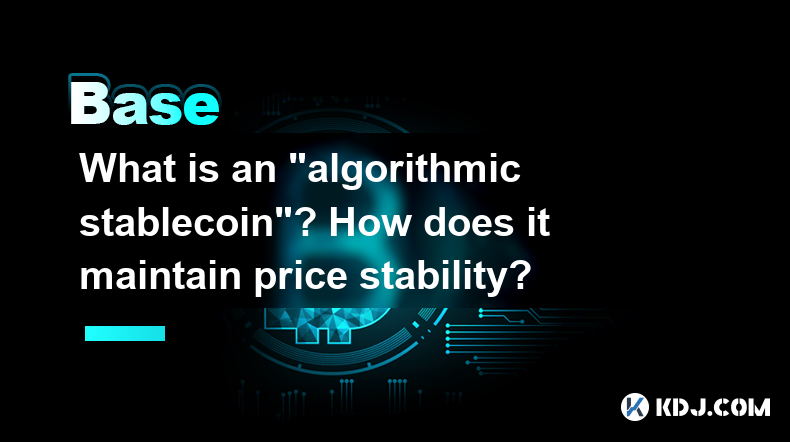
Understanding Algorithmic Stablecoins: A Deep Dive
Algorithmic stablecoins represent a novel approach to maintaining price stability in the volatile cryptocurrency market. Unlike fiat-collateralized stablecoins pegged to the US dollar, algorithmic stablecoins rely on complex algorithms and economic incentives to keep their value near a target, usually $1. They don't rely on reserves of fiat currency or other assets. Instead, they employ a system of interconnected tokens and smart contracts to manage supply and demand. This makes them inherently more complex and riskier than their collateralized counterparts.
Mechanisms for Maintaining Price Stability
The core of an algorithmic stablecoin's functionality lies in its price stabilization mechanism. This often involves two or more tokens working in tandem. One token is the stablecoin itself, designed to maintain a stable price. The other is a reserve or collateral token, often used to adjust the supply of the stablecoin. These mechanisms are designed to counteract price fluctuations.
Supply Adjustment: When the stablecoin's price falls below the target (e.g., $1), the algorithm might mint more of the stablecoin, increasing supply and theoretically lowering its price. Conversely, if the price rises above the target, the algorithm might burn (destroy) stablecoins, reducing supply and increasing its value.
Arbitrage Opportunities: The system often relies on arbitrage opportunities. If the stablecoin trades below its target price, traders can buy it cheaply and exchange it for the reserve token, profiting from the difference. This increased demand for the stablecoin pushes its price back up. The reverse happens when the stablecoin trades above its target price.
Seigniorage: Some algorithmic stablecoins use a seigniorage mechanism. This means that the protocol generates new stablecoins, often distributed as rewards to users who contribute to the system's stability, such as through staking or governance. This can incentivize participation and help maintain price stability. However, this also raises concerns about inflation.
The Role of the Reserve Token
The reserve token plays a crucial role in maintaining the algorithmic stablecoin's peg. Its value is often inversely correlated with the stablecoin's value. When the stablecoin's price drops, the reserve token's price typically rises, providing a buffer. The mechanism for interacting between the stablecoin and the reserve token is usually defined within smart contracts, making the process automated and transparent (in theory). The specific mechanics vary widely between different algorithmic stablecoins.
The design of the reserve token is critical. Its utility and demand significantly impact the effectiveness of the entire system. A poorly designed reserve token can lead to instability and collapse of the entire algorithmic stablecoin ecosystem.
Risks and Challenges of Algorithmic Stablecoins
Algorithmic stablecoins are inherently risky. Their complex mechanisms can be difficult to understand and prone to unforeseen vulnerabilities. Here are some key risks:
Systemic Risk: A single vulnerability or unexpected event can trigger a cascading effect, leading to a rapid loss of value. The interconnected nature of the system means that a failure in one part can impact the entire system.
Lack of Transparency: The complexity of the algorithms can make it difficult to fully understand how the system works and identify potential weaknesses. This lack of transparency increases the risk of unexpected failures.
Governance Issues: The governance structure of an algorithmic stablecoin is crucial for its long-term success. Poor governance can lead to conflicts of interest and decisions that compromise the stability of the system.
Examples of Algorithmic Stablecoins
Several algorithmic stablecoins have been launched, each with its own unique mechanism and features. However, many have faced significant challenges and even complete collapses. Understanding the specific mechanisms of each project is essential before investing. Thorough research is paramount. Do not invest in algorithmic stablecoins without a deep understanding of their underlying mechanics and associated risks.
The Importance of Audits and Security
Given the inherent complexity and risks associated with algorithmic stablecoins, thorough security audits are crucial. Independent audits can help identify vulnerabilities and potential weaknesses in the system's design and implementation. However, even with audits, there is no guarantee of complete security.
The Future of Algorithmic Stablecoins
The future of algorithmic stablecoins remains uncertain. While the concept offers a decentralized alternative to fiat-collateralized stablecoins, the challenges associated with maintaining price stability and mitigating risks are significant. Ongoing development and innovation in this space may lead to more robust and reliable systems, but caution remains essential.
Frequently Asked Questions
Q: What is the main difference between algorithmic and collateralized stablecoins?
A: Collateralized stablecoins maintain their peg by holding reserves of assets like USD or other cryptocurrencies, while algorithmic stablecoins rely on algorithms and economic incentives to maintain their price.
Q: Are algorithmic stablecoins safe?
A: No, algorithmic stablecoins are inherently risky. Their complex mechanisms are susceptible to unforeseen vulnerabilities and can experience rapid and dramatic price collapses.
Q: How can I invest in algorithmic stablecoins?
A: Investing in algorithmic stablecoins involves significant risk. You should only invest what you can afford to lose and only after thorough research and understanding of the associated risks. You'll typically need to use a cryptocurrency exchange that supports the specific stablecoin you are interested in.
Q: What are the benefits of algorithmic stablecoins?
A: The potential benefits include decentralization and potentially higher efficiency compared to collateralized stablecoins. However, these benefits are often outweighed by the significant risks involved.
Q: What happens if an algorithmic stablecoin loses its peg?
A: If an algorithmic stablecoin loses its peg, its value can plummet rapidly, resulting in significant losses for investors. The specific consequences depend on the design of the stablecoin and the overall market conditions.
Q: Are there any regulations around algorithmic stablecoins?
A: The regulatory landscape for algorithmic stablecoins is still evolving. Many jurisdictions are exploring ways to regulate these assets, but there is currently no universally accepted regulatory framework.
Disclaimer:info@kdj.com
The information provided is not trading advice. kdj.com does not assume any responsibility for any investments made based on the information provided in this article. Cryptocurrencies are highly volatile and it is highly recommended that you invest with caution after thorough research!
If you believe that the content used on this website infringes your copyright, please contact us immediately (info@kdj.com) and we will delete it promptly.
- Bitcoin (BTC) price falls four per cent after Donald Trump imposes tariffs on trading partners worldwide
- 2025-04-03 14:25:13
- Ethereum Price Fails to Maintain Gains
- 2025-04-03 14:25:13
- Justin Sun, Founder of Tron, Steps in to Rescue TrueUSD (TUSD) from a $456M Reserve Crisis
- 2025-04-03 14:20:12
- Meme Coins Are Exploding, Here's Why They're So Appealing
- 2025-04-03 14:20:12
- Qubetics ($TICS): The Best 100x Crypto for Real Utility and ROI
- 2025-04-03 14:15:12
- Ethereum Faces Tough Market Conditions
- 2025-04-03 14:15:12
Related knowledge
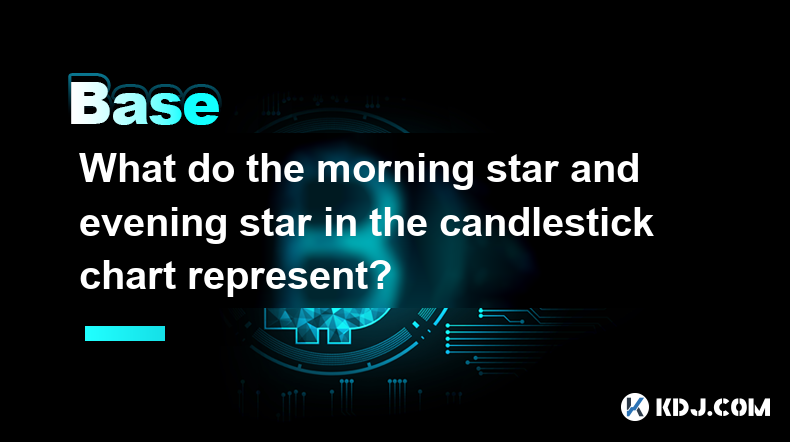
What do the morning and dusk stars in the candlestick chart represent?
Apr 03,2025 at 03:11pm
In cryptocurrency trading, the K-line chart is an important tool for analyzing market trends and price movements. Among them, 'Morning Star' and 'Evening Star' are two important reversal patterns, which represent the key signals of the market's shift from a bear market to a bull market and from a bull market to a bear market, respect...
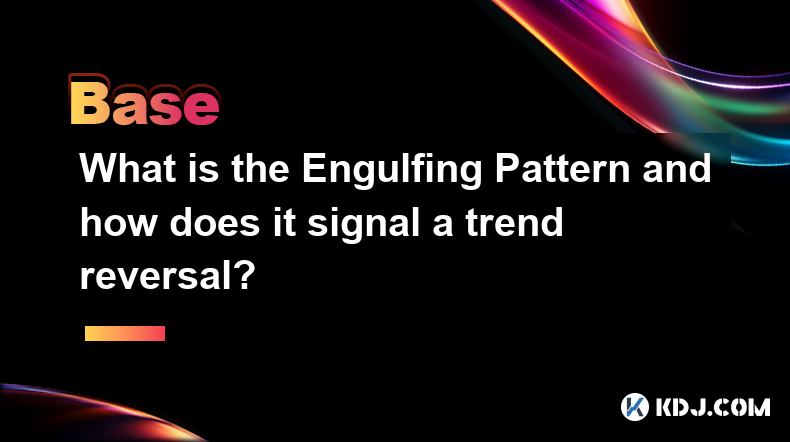
What is the swallowing form? How does it predict a trend reversal?
Apr 03,2025 at 03:07pm
In cryptocurrency trading, technical analysis is one of the important tools traders use to predict market trends and make trading decisions. Among them, the Engulfing Pattern is a common K-line pattern. When it appears on the chart, it is usually considered a signal of a trend reversal. This article will explore in detail what the engulfing pattern is a...
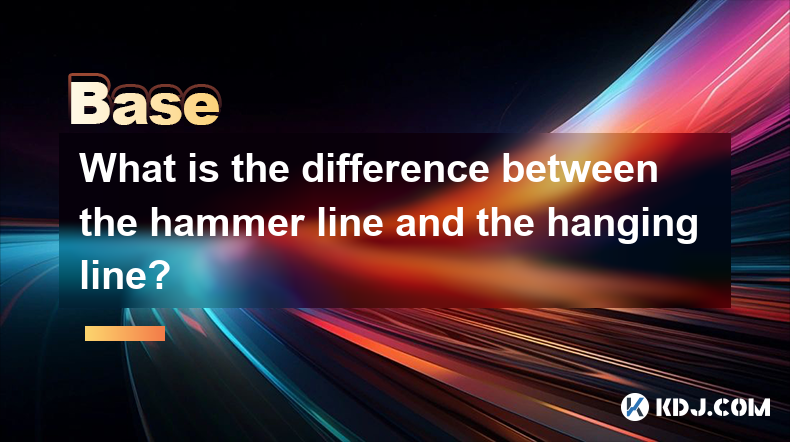
What is the difference between the hammer line and the hanging line?
Apr 03,2025 at 03:03pm
The hammer line and the 'hanging line' pattern are common K-line patterns in technical analysis. They are very similar in appearance, but there are significant differences in the market environment and the predicted market trend. This article will explore the differences between these two forms in detail and help readers better understand and use them f...
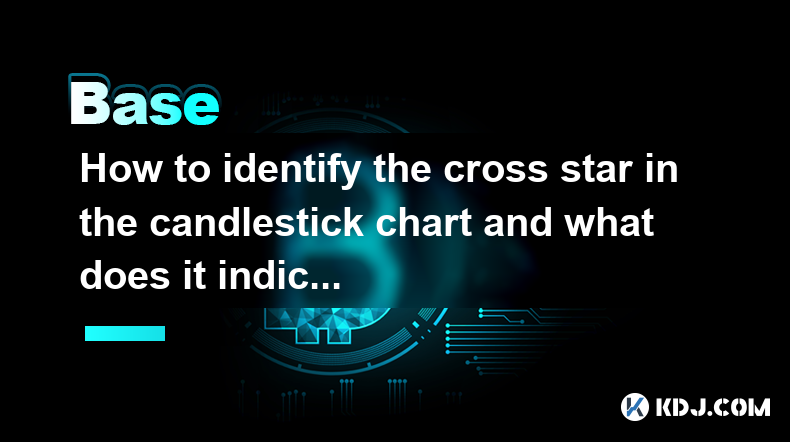
How to identify the cross star in the candle chart and what does it mean?
Apr 03,2025 at 02:57pm
In cryptocurrency trading, the K-line chart is one of the important tools to analyze market trends and price movements. Among them, 'Cross Star' is a common K-line pattern, which is of great significance in analyzing market sentiment and predicting price trends. This article will introduce in detail how to identify the 'cross star' in th...
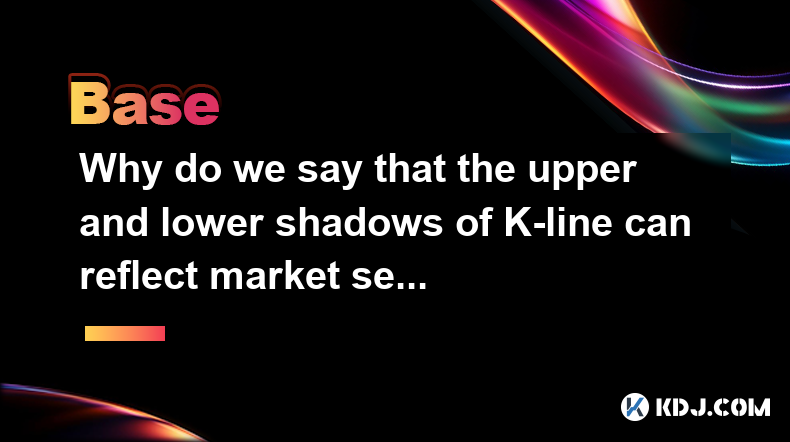
Why do the upper and lower shadows of the K-line reflect market sentiment?
Apr 03,2025 at 02:53pm
The K-line chart is one of the most commonly used tools in technical analysis, and the upper and lower shadows can intuitively reflect the market's long and short emotions and the psychological state of traders. By carefully observing and analyzing the upper and lower shadows of the K-line, investors can better understand market dynamics and make sm...

What are positive and negative lines? What is the difference between them?
Apr 03,2025 at 02:47pm
In the cryptocurrency market, the K-line chart is a commonly used technical analysis tool to show price changes. Each 'candle' in the K-line chart represents the price trend over a period of time, among which 'yang line' and 'yin line' are two key concepts. Understanding them is essential to analyzing market trends and making trading decisions. What is ...

What do the morning and dusk stars in the candlestick chart represent?
Apr 03,2025 at 03:11pm
In cryptocurrency trading, the K-line chart is an important tool for analyzing market trends and price movements. Among them, 'Morning Star' and 'Evening Star' are two important reversal patterns, which represent the key signals of the market's shift from a bear market to a bull market and from a bull market to a bear market, respect...

What is the swallowing form? How does it predict a trend reversal?
Apr 03,2025 at 03:07pm
In cryptocurrency trading, technical analysis is one of the important tools traders use to predict market trends and make trading decisions. Among them, the Engulfing Pattern is a common K-line pattern. When it appears on the chart, it is usually considered a signal of a trend reversal. This article will explore in detail what the engulfing pattern is a...

What is the difference between the hammer line and the hanging line?
Apr 03,2025 at 03:03pm
The hammer line and the 'hanging line' pattern are common K-line patterns in technical analysis. They are very similar in appearance, but there are significant differences in the market environment and the predicted market trend. This article will explore the differences between these two forms in detail and help readers better understand and use them f...

How to identify the cross star in the candle chart and what does it mean?
Apr 03,2025 at 02:57pm
In cryptocurrency trading, the K-line chart is one of the important tools to analyze market trends and price movements. Among them, 'Cross Star' is a common K-line pattern, which is of great significance in analyzing market sentiment and predicting price trends. This article will introduce in detail how to identify the 'cross star' in th...

Why do the upper and lower shadows of the K-line reflect market sentiment?
Apr 03,2025 at 02:53pm
The K-line chart is one of the most commonly used tools in technical analysis, and the upper and lower shadows can intuitively reflect the market's long and short emotions and the psychological state of traders. By carefully observing and analyzing the upper and lower shadows of the K-line, investors can better understand market dynamics and make sm...

What are positive and negative lines? What is the difference between them?
Apr 03,2025 at 02:47pm
In the cryptocurrency market, the K-line chart is a commonly used technical analysis tool to show price changes. Each 'candle' in the K-line chart represents the price trend over a period of time, among which 'yang line' and 'yin line' are two key concepts. Understanding them is essential to analyzing market trends and making trading decisions. What is ...
See all articles























































































